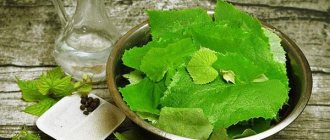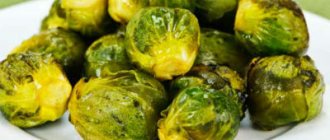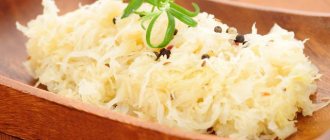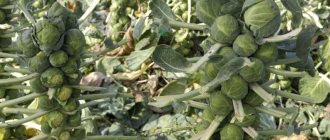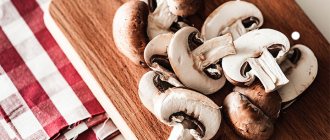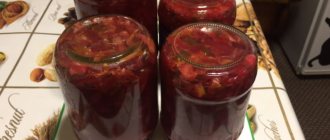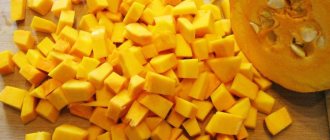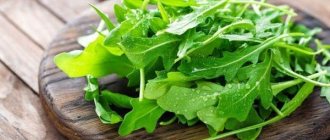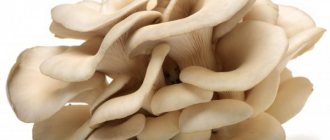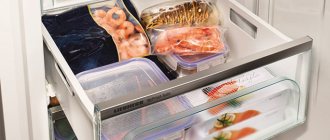Benefits and harms
As you know, frozen vegetables are almost as healthy as fresh ones. Unless some nutrients are lost during storage. Brussels sprouts are a type of regular cabbage.
This vegetable is low in calories and therefore included in the diet of people who want to lose weight. The beneficial properties of the product are almost limitless:
- reduces blood cholesterol;
- improve vision and protect the retina from damage thanks to its constituent zeaxanthin and vitamin A;
- reduces the risk of viral diseases due to the high content of vitamin C;
- improves brain function;
- isothiocyanates make the product an excellent cancer prevention agent.
Cabbage also has contraindications . It should not be used if the gastrointestinal tract is disrupted and there is high acidity.
It is recommended to limit the consumption of vegetables for people suffering from thyroid diseases.
Freezing rules
First of all, you need to choose quality products. It is best to take heads of cabbage with a diameter of no more than 2 centimeters. They should be free of visible defects and damage, as well as lethargy and rot.
After sorting the vegetables, you need to trim the stems as they have no nutritional value.
Then you can proceed directly to preparing for freezing. For this you will need:
- pot;
- colander;
- container with ice water;
- paper towels;
- freezing tray;
- packages.
The step-by-step recipe is very simple. You need to do the following:
- Pour 3 liters of water into a saucepan and, after boiling, add 1 kilogram of cabbage.
- Cook for about 3 minutes. There is no need to increase the time. The heads of cabbage should be green. There is no need to add anything to the water, since freezing itself will remove the specific bitterness of the product.
- After blanching, drain the liquid and place the cabbage in ice water.
- Dry the heads of cabbage.
- Transfer the product to a tray in one layer and place in the freezer. If your freezer has a “Quick Freeze” function, then you should definitely use it. This way the product will be of higher quality.
- Place frozen vegetables in a bag and place in the freezer. The workpiece can be stored for 12 months.
Freezing Brussels sprouts
Brussels sprouts can be frozen in either plastic bags or food containers. Plastic bags are preferable because they take up less space in the freezer than any other container.
Place the dried heads of cabbage on a tray, baking sheet or flat plate in one layer and place in the freezer for 1-2 hours. This way they won't stick together. This will be convenient during the preparation of a dish, or when not the entire portion is needed, but a small part of it.
Frozen heads of cabbage are poured into a bag. You need to try to keep as little air as possible in it.
If your freezer has a quick freeze function, then you should use it. When vegetables are frozen quickly, more nutrients are retained.
Some recommendations
There are several nuances and tips to consider when freezing Brussels sprouts. They will allow you to get better quality workpieces:
- If you need to freeze a large number of heads of cabbage, you need to boil new fresh water each time, pouring out the used one.
- You don’t have to blanch the cabbage, but immediately put it in the freezer, but this significantly reduces the shelf life. But if you don’t have time to prepare, then you can use this method.
- Unblanched cabbage can be immediately put into bags, since it is not wet and does not stick together when frozen.
- The date of manufacture of the product must be indicated on each package in order to control shelf life.
By properly freezing Brussels sprouts, you can reap the benefits of them throughout the year. A tasty vegetable will diversify the menu and give you health.
Can Brussels sprouts be frozen?
Freezing is one of the most universal ways to preserve vegetables, berries and fruits grown in your garden for the winter. This method also works for Brussels sprouts.
If you follow the procedure algorithm, then after freezing more than 90% of the vitamins are preserved
After freezing, Brussels sprouts soften a little and lose their characteristic crunch; if stored for a long time, they change their rich green color to lime. However, the taste does not suffer.
Brussels sprouts - ways to prepare for the winter
Preparing that cabbage is not very difficult. Ripe heads of cabbage are cut off at the base of the stem, and bad leaves with stalks are removed. Well, then everything depends on your desire.
Cabbage can be frozen, maintaining its original taste and texture. But if you don’t want to bother with defrosting at the right time, then marinating will come to your aid, which will give our Brussels vegetables additional taste and aroma. And it’s convenient to eat it marinated due to its size. You get some kind of vitamin seeds.
How to freeze Brussels sprouts for winter storage
Before freezing, cabbage heads should be kept for five to six minutes in cool, lightly salted water. This will get rid of any insects that may be inside. Then rinse the cabbage under running water.
Next, pour the heads of cabbage into a pan with salted water and wait for it to boil. After boiling, remove the pan from the heat and let the cabbage stand for a couple of minutes. After time has passed, drain the cabbage in a colander, rinse with ice water and then dry.
If you have ever made homemade dumplings, then the next step will be familiar to you. Place our cabbage on a baking sheet, spread or dish in an even layer and put it in the freezer.
As soon as the cabbage is completely frozen, transfer it from the baking sheet into bags and throw it back into the freezer.
Due to the fact that we first boiled the cabbage until half cooked, it will take you much less time to prepare dishes later. We have this kind of semi-finished product for the winter.
How to cook frozen Brussels sprouts
Cooking frozen cabbage is quick and easy. But even in these cases, you can mess up. Please, under no circumstances should you torture the cabbage by fire. How many times have I seen “killed” frozen vegetables that were left on the stove under the pretext “to make sure they were cooked?”
Properly frozen Brussels sprouts have already been half-cooked before freezing. So it will take her ten, maximum fifteen minutes to get the desired condition.
And so, put a pan of water on the stove, salt it a little and wait until it boils. And now we throw the cabbage heads into boiling water. After ten minutes, the cabbage will have time to melt and cook.
Drain the hot water from the finished cabbage and add cooler water. This way the heads of cabbage will keep their shape better and will not turn into mush during further culinary manipulations.
Brussels sprouts in batter
Products:
- 400 gr. frozen or fresh Brussels sprouts;
- eggs - 3 pcs. (need proteins);
- flour - 3-4 tablespoons;
- sour cream - 1 teaspoon.
Cooking Brussels sprouts in batter:
- Cook the Brussels sprouts, cool and dry slightly. Whisk the whites, flour and sour cream - you should get a fairly thick mixture so that it does not run off the cabbage.
- Dip the cabbage in the batter, place in a frying pan and place over medium heat, turning regularly. Fry for only 7 minutes.
Pickled Brussels sprouts
Pickled Brussels sprouts are a delicious appetizer. And it will be in great demand due to its appearance and size. I pricked a head of cabbage on a fork, put it in my mouth, and so on over and over again.
Ingredients:
- Brussels sprouts – one kilogram
- Water - liter
- Sugar – sixty grams
- Salt - fifty grams
- Ground black pepper – one gram
- Vinegar 9% - two hundred and fifty milliliters
We cut the peeled and washed cabbage in half and put it in a jar, but more tightly.
To make the marinade, dissolve sugar and salt in water, add vinegar and pepper, and bring the mixture to a boil.
Pour boiling marinade over our cabbage, cover with a lid and pasteurize for about twenty minutes.
After pasteurization, roll up the lid and send it to cool, wrapped in a blanket.
Canned Brussels sprouts with vegetables
And so, we need:
- Brussels sprouts – one and a half kilograms
- Bell pepper - four hundred grams
- Onions – six small onions
- Hot chili pepper - one small peppercorn
- Salt - tablespoon
- Sugar – Two tablespoons
- Vinegar – Teaspoon
- Bay leaf - a couple of pieces
- Allspice and black peppercorns - five pieces each
We process the cabbage, clean it and cut it in half, especially large heads of cabbage into quarters. Peel the carrots and cut them into slices one and a half to two centimeters thick. Cut the pepper into cubes or triangles, one and a half centimeters per side.
Place spices and onions, carrots and peppers in a sterilized jar. Place Brussels sprouts on top.
Now let's start the marinade. Pour water into a saucepan, dissolve sugar and salt in it. Put it on the fire and wait until it boils.
Pour the boiling marinade into the jars, screw them on with lids and set them to cool under a blanket, having first turned them upside down.
After three to four days, you can try our Brussels sprouts.
Korean Pickled Brussels Sprouts
Sometimes we want to add some thrills to our lives. Some people jump with a parachute to do this, others swim with sharks. Well, for us mere mortals, spicy Korean cuisine and its preservation options come to the rescue. For Korean Brussels sprouts we will need:
- Brussels sprouts – one and a half kilos
- Carrots - four hundred grams
- Garlic – 10 large cloves
- Bay leaf - two or three pieces
- Chili pepper - one small pod
- Water – one liter
- Salt - two tablespoons, without top
- Sugar - one tablespoon
- Vinegar 9% - tablespoon
- Vegetable oil - twenty milliliters
Wash the cabbage and remove any wilted leaves, cut in half. Grate the carrots for “Korean carrots”. Squeeze the garlic through a squeezer. Cut the chili pepper into four to five pieces. We put everything in random order in jars.
Let's start preparing the marinade. Mix water, vinegar and sugar with salt in a saucepan. Put it on the fire and wait until it boils. Pour the boiling marinade into jars. We send the resulting case to pasteurize for about twenty minutes. Then we roll up the lids and cool, wrapping them in a blanket.
These are our unusual and multifaceted Brussels sprouts, with which you can do anything you want. I think you will find options for preserving and storing it for the winter useful. Enjoy your meal!
Do-it-yourself Brussels sprouts for the winter – tasty and healthy +
Based on their striking resemblance to rosebuds, in Germany Brussels sprouts are called rosenkol (rose cabbage). But we are more familiar with the first name.
The long stalk contains up to eighty small but fairly dense heads of cabbage. This vegetable contains quite a lot of potassium, which makes it very useful for people with diseases of the cardiovascular system.
The caloric content of the broth made from cabbage can be compared with chicken broth. It is able to stimulate wound healing, on the basis of which it is recommended for patients undergoing postoperative rehabilitation. Cabbage juice is great for diabetes.
The important fact is that after freezing, this vegetable does not waste its nutritional elements and distinctive taste characteristics. It is believed that the heads of cabbage, which do not exceed a five-centimeter diameter, contain much more proteins and vitamin components than the well-known white beauty.
The taste of cabbage is unique and smacks of sweetness. The vegetable is excellent for first courses and side dishes. Cabbage is canned and dried.
How to salt Brussels sprouts
It is believed that cabbage heads can literally heal not only the body, but also the soul.
They relieve depression, fill you with strength, and even speed up the process of blood clotting. Regular consumption of this vegetable is comparable to preventive measures against cancer.
If you want to provide yourself with a supply of vitamins for the whole year, then consider the salting recipe.
Ingredients:
- cabbage – 1 kilogram;
- water – 1 liter;
- salt – 1.5 – 2 large spoons;
- carrots – 3 – 5 pieces;
- granulated sugar (replacement with honey is allowed) – 1.5 – 2 tablespoons;
- dill, cumin, bay leaves.
Cooking method:
- The carrots should be peeled, washed, and grated on a coarse grater.
- The preparatory process of cabbage includes sorting it, washing it, and removing limp leaves. Cut the largest heads of cabbage into two halves; small ones can be salted whole.
- Mix cabbage with grated carrots and place in a container.
Glass containers are allowed for this, but wooden containers are the ideal type. The cabbage layers are layered with dill and bay leaves and sprinkled with caraway seeds. It is not prohibited to use other spices. - After boiling water, dissolve salt and sugar in it, pour it over the cabbage.
- If wooden utensils are used, they are covered with a linen towel, pressed down with a circle and a weight is placed for five days. The glass jar is simply sealed with a plastic lid.
The main condition of the recipe is that the cabbage heads should not be above the brine level.
To do this, you must first accurately determine its quantity.
Recipe options
There are many variations of the classic recipe : some are prepared without pasteurization, others add spices, tomatoes, beets, bell peppers. It all depends on personal preference.
With carrots and hot peppers
This option will appeal to connoisseurs of savory snacks. The amount of hot chili is adjusted to taste.
Ingredients:
- Brussels sprouts - 0.5 kg;
- carrots - 2 pcs.;
- bell pepper - 1 pc.;
- chili - ½ piece;
- salt - 30 g;
- sugar - 80 g;
- apple cider vinegar 6% - 50 ml;
- water - 2 l;
- vegetable oil - 50 ml.
Preparation:
- Large heads of cabbage are cut in half, small ones are left whole.
- Carrots are cut into cubes or circles.
- The pepper is cleared of seeds and cut into strips. The chili is finely chopped.
- Boil water in a saucepan and add cabbage. Blanch for 5 minutes, add the remaining vegetables. Cook for another 2-3 minutes and pour the broth into another container.
- Add spices and vinegar to this marinade.
- The vegetables are placed in clean jars, poured with marinade and covered with tin lids. Pasteurize for 10–15 minutes, then roll up with a key.
- Turn the jars over and wrap them until they cool.
Take note:
How to Freeze Brussels Sprouts for the Winter
Recipes for pickling Brussels sprouts for the winter
Assorted vegetables
Assorted vegetables will be an excellent addition to boiled potatoes or meat dishes.
Will be needed:
- Brussels sprouts and cauliflower - 500 g each;
- tomatoes - 500 g;
- garlic - two heads;
- hot pepper - to taste;
- wine vinegar - 150 ml;
- water - 2 l;
- sugar - 75 g;
- salt - 50 g.
How to cook:
- Cauliflower is divided into inflorescences and the dark parts are removed. Large Brussels sprouts are cut in half. Blanch the vegetables in boiling water for 5 minutes and transfer to a bowl of ice water.
- Add tomatoes, hot peppers, garlic to boiling water for two minutes, throw everything into a bowl of cold water.
- Prepare a marinade based on vegetable broth. Add salt, sugar, vinegar.
- Vegetables are laid out in layers in a clean container and poured with boiling liquid. Sterilize under lids for 20 minutes.
- The jars are taken out of the pan and rolled up with a key, turned over and wrapped.
With beets and garlic
Beets color the appetizer pink, and vegetables remain crunchy without heat treatment.
Advice. To prepare the marinade, use only clean filtered water without foreign odors.
Ingredients:
- cabbage - 0.5 kg;
- beets - 1 pc.;
- water - 250 ml;
- vinegar 9% - 200 ml;
- sugar - 80 g;
- garlic - 6-7 cloves;
- sunflower oil - 150 ml;
- salt - 60 g;
- black peppercorns - 5 pcs.
Preparation:
- Large heads of cabbage are cut in half, small ones are left whole.
- The beets are chopped into strips.
- Place the vegetables in an enamel bowl, add garlic, passed through a press, and mix.
- Prepare a marinade with water, vinegar, oil, salt, pepper, and pour it over the vegetables. Place pressure on top (for example, a wooden board and a three-liter jar of water) and leave for a day in a warm place. The mixture is stirred several times.
- The snack is transferred to a jar, closed and placed in the refrigerator.
“Hunter” salad
Traditionally, this salad is prepared with white cabbage, but in this recipe its place is successfully replaced by Brussels sprouts.
Advice. 9% table vinegar is replaced with apple or wine vinegar, since the former is not very good for the stomach.
Ingredients:
- cucumbers - 3 pcs.;
- carrots - 2 pcs.;
- onions - 2 pcs.;
- sweet pepper - 2 pcs.;
- tomatoes - 2 pcs.;
- cabbage - 300 g;
- hot pepper - 1 pc.;
- allspice peas - 5 pcs.;
- bay leaf - 2 pcs.;
- sunflower oil - 50 ml;
- vinegar 9% - 30 ml;
- salt - 30 g;
- sugar - 30 g;
- ground paprika - 1 tsp.
Preparation:
- Place small Brussels sprouts, sliced peppers and tomatoes, grated carrots, chopped cucumbers and chopped onions into a saucepan.
- Add spices, salt and sugar to the vegetables, pour in vegetable oil, vinegar and mix. Leave the mixture for 3-4 hours, stirring occasionally.
- Place the pan on the stove and cook over low heat for 15 minutes.
- Place the salad in clean jars and sterilize under the lids in a water bath for 10 minutes. Then they roll it up with a key, turn it over and wrap it up.
Recipe for pickling Brussels sprouts
For such preparation, it is necessary to select the densest heads of cabbage (the recommended size is no more than four centimeters in diameter).
Cook together:
- Sort the cabbage, remove damaged leaves and heads, rinse.
- Bring salted water to a boil and blanch for no more than three minutes.
- Place tightly in jars and fill with salted water (hot).
- The jars are covered and sterilized for at least forty minutes.
This product must be stored in a cool place.
Spicy salad with vegetables
Pickled Brussels sprouts cooked with vegetables can be used not only as a salad, but also served as a side dish for poultry. Thanks to the large number of aromatic components, the smell and taste will be simply amazing.
Ingredients
To marinate the salad, take:
- Brussels sprouts – 1 kg;
- carrots – 400 g;
- sweet pepper – 300 g;
- very small hot pepper – 4 pcs.;
- garlic – 4 cloves;
- bay leaf – 4 pcs.;
- allspice – 8 pcs.;
- parsley - a bunch;
- dill seeds – 1 tbsp. spoon;
- vinegar - 8 tbsp. spoons
- water – 1.2 l;
- salt – 1 tbsp. spoon;
- sugar – 1 tbsp. spoon.
We expect that there will be 4 half-liter jars of pickled cabbage. But depending on the size of the heads, the cutting of carrots and peppers, and the density of vegetables, more may be required. If necessary, increase the amount of spices and marinade.
Preparation
Wash the vegetables and remove the top leaves from the cabbage if necessary. Remove the stems and seeds from the sweet pepper. Remove the skins from the garlic. Shorten the tails of the hot peppers. Peel the carrots and cut into slices. Wash the parsley.
Source: https://luojatar.ru/eda/bryusselskaya-kapusta-kak-gotovit-na-zimu.html
Freezing Brussels sprouts for the winter, step-by-step recipe with photos
Fresh heads of Brussels sprouts are valued in cooking for their harmonious balance of low calorie content and high nutritional value. The product contains folic and ascorbic acids, tocopherol, niacin, riboflavin, thiamine, retinol, and beta-carotene.
In addition to vital vitamins, the vegetable contains potassium, calcium, magnesium, sodium, phosphorus, iodine, iron, molybdenum, zinc, fluorine, copper, manganese, and cobalt. Important! In order for Brussels sprouts to develop well and be elastic, it is necessary to remove the top of the stem when they begin to grow.
Experts say that the product, when properly frozen, retains a significant proportion of all nutritional components until the onset of the new season. And its taste characteristics are also preserved. During the processing process, only a small part of the beneficial substances is lost.
We advise you to familiarize yourself with the correct technology for freezing broccoli.
According to experts, Brussels sprouts, fresh or frozen, must be included in the diet of pregnant women, children, the elderly, people suffering from cardiovascular diseases and malignant tumors.
- Firstly, it is an excellent prevention of hypertension, tachycardia, arrhythmia, and bradycardia.
- Secondly, the vegetable, due to the indole-3-carbinol present in the composition, prevents the formation of breast cancer.
- Thirdly, it stimulates brain function and improves memory.
- Fourthly, it stimulates the body’s immune functions, which is especially important in the autumn-winter period.
- And fifthly, small heads of cabbage help remove cholesterol from the body and have a beneficial effect on the organs of vision.
Important! Doctors advise limiting the consumption of Brussels sprouts for people with high stomach acidity, dysfunction of the thyroid gland and gastrointestinal tract organs.
Brussels sprouts in the freezer: how to freeze them correctly? How to cook frozen?
Freezing Brussels sprouts for the winter is the best way to preserve this vegetable. This is a fairly simple and affordable method in which cabbage retains its nutritional value and delicate taste. Thanks to its small size, it can easily be placed in the freezer. In winter, Brussels sprouts will be an excellent addition to vegetable soups, stews, and salads.
Live healthy: the benefits of cabbage and can it be frozen:
Brussels sprouts are highly valued in cooking for their combination of low calorie content and high nutritional value. It also contains many substances necessary for the human body. Includes:
- Vitamins A, C, B1, B2, B6, E and PP;
- Microelements: potassium, calcium, magnesium, sodium, phosphorus, iodine, iron, molybdenum, zinc, fluorine, copper, manganese, cobalt;
- Folic and ascorbic acids;
- Beta carotene;
- Indinol-3-carbinol;
- Vegetable protein.
Experts recommend the consumption of Brussels sprouts, both fresh and frozen, for pregnant women, children, and the elderly.
Beneficial features:
- An excellent prophylactic for high blood pressure and heart rhythm disorders;
- Prevents the formation of malignant tumors;
- Improves brain activity and memory;
- Increases immunity;
- Reduces cholesterol levels;
- Has a beneficial effect on vision;
- Reduces the likelihood of birth defects in children;
- Helps get rid of excess weight.
ATTENTION: Doctors do not recommend consuming Brussels sprouts for people with high stomach acidity, dysfunction of the thyroid gland and gastrointestinal tract organs.
When selecting cabbage for freezing, you need to carefully examine all the heads and choose elastic and dense ones, with a diameter of no more than two centimeters. The upper leaves should be fresh and without dark spots, there should be no rot on the heads and stems, without mechanical damage. Larger specimens can be cut in half; this will not affect the taste.
Basic Rules:
- Repeated freezing of cabbage is not recommended; defrosted cabbage should be used immediately in cooking;
- Cabbage does not require defrosting; it can be cooked while frozen.
HELP: Improper removal of cabbage forks from the main stem will result in unsuccessful freezing. Careful removal will help maintain the integrity of the heads.
To prepare vegetables for freezing you will need:
- Blanching pan;
- Colander or sieve;
- Bowl with ice water for cooling;
- Paper towels;
- Containers for freezing;
- Ziploc bags.
How to store Brussels sprouts:
Step-by-step instructions for freezing Brussels sprouts
Freezing technology:
- Pour water into the pan (at a ratio of 3 liters of water per kilogram of vegetables);
- After the water boils, dip the prepared cabbage into it and boil for 2-3 minutes;
- Do not increase the blanching time; the color should remain bright green;
- After blanching, quickly drain the water and plunge the cabbage into ice water;
- Place the cooled heads of cabbage on a towel to drain off excess water and dry them;
- Place dried cabbage in one row in a tray and place in the freezer to freeze;
- After freezing, place the cabbage in a plastic bag, removing as much air as possible from it.
HELP: If your refrigerator has the “Quick Freeze” function, you can use this mode.
Some housewives neglect blanching, complaining about lack of time, and skip this procedure when freezing Brussels sprouts. In the end, they end up with low-quality cabbage that is only good for a short period of time.
Blanching will greatly simplify subsequent cooking. In order for the cabbage to become ready for consumption, 10 minutes of heat treatment is enough.
In addition, blanched vegetables do not need to be thawed first and their shelf life is doubled .
Fresh cabbage has a slight bitterness, which will disappear after blanching and further freezing.
When frozen, cabbage is stored in the freezer at a temperature no higher than -18 degrees for a year.
Adviсe
Tips and tricks:
- Boil fresh Brussels sprouts in salted water with the addition of lemon juice to get rid of the bitter taste;
- To freeze, you don’t need to trim all the cabbage at once. This can be done gradually. First, the heads of cabbage in the lower part of the trunk will finally ripen, then those in the middle. Therefore, you can first trim and freeze the heads of cabbage that have ripened at the bottom. After a week, cut off the middle ones and then the top ones. The forks at the top will fully grow and ripen;
- When freezing gradually, the bags must be marked with the date;
- Brussels sprouts can also be frozen along with other vegetables. Peas and corn, carrots and sweet peppers are perfect for such a neighborhood. You can also freeze a cabbage platter made from broccoli, Brussels sprouts and cauliflower.
Freezing method:
How to cook frozen Brussels sprouts deliciously
Frozen Brussels sprouts in a frying pan.
Ingredients:
- Frozen Brussels sprouts - 300 grams;
- Sour cream - 100 ml;
- Grated cheese to taste;
- Salt and spices;
- Meat broth - 100 ml.
Fry the cabbage in a frying pan for about 8 minutes, stirring occasionally. Mix sour cream with broth, add salt and pepper. Pour sauce over Brussels sprouts. Remove the frying pan from the heat and place it in an oven preheated to 180 degrees. After 15 minutes, sprinkle the cabbage with grated cheese and mix a little. Close the oven and cook for another 10 minutes.
Cooking correctly: how much and how to cook
After freezing throughout the winter, Brussels sprouts will be a frequent guest on the table - an unusually tasty and healthy vegetable.
It will not only add variety to your diet, but also help improve your health . Unfortunately, not everyone likes this cabbage because of its bitter taste.
But you just have to choose the right seasonings that will perfectly highlight its taste and turn a disadvantage into an advantage.
We recommend articles on the topic
0
0
Source: https://web-selo.ru/kak-zamorozit-bryusselskuyu-kapustu-v-morozilke-i-kak-ee-potom-gotovit.html
Choosing cabbage for freezing
Considering the direct dependence of the nutritional value and safety of the product on the technology of its freezing, we will consider in detail how to freeze Brussels sprouts at home. First of all, for this we need high-quality vegetables. During the selection process, carefully inspect all the heads of cabbage and give preference to elastic, dense specimens that do not exceed 2 cm in diameter. They should not show yellowness, signs of lethargy and rot, as well as any mechanical damage.
Learn more about the beneficial properties and culinary uses of cabbage varieties: white, red, cauliflower, Romanesco, Peking, Savoy, broccoli, kale, kohlrabi, pak choy.
If the harvest is striking in its size, do not be alarmed. Large heads can be cut in half or into 4 parts. This nuance will not affect the taste and quality of vegetable products. The main thing is that there are no cracks or cuts on the workpieces where microorganisms could hide. It is better to use such a vegetable immediately for cooking. Experienced gardeners say that freezing is unsuccessful precisely because the cabbage heads are incorrectly removed from the central stem. This must be done very carefully so that the integrity of the heads of cabbage is preserved.
Choosing cabbage for freezing
For freezing, select only Brussels sprouts of a typical size for a given variety - not too large and not small. It should not be loose, lethargic or soft. Color is also important - specimens with yellow leaves are not suitable for freezing.
The “gold standard” for this crop is specimens with a diameter of 2.5-3 cm
Specimens with even minor mechanical damage, traces of insect damage and signs of any diseases are also rejected. This applies not only to the head of cabbage - Brussels sprouts with a broken, cracked stalk are not suitable for freezing. Through such damage, spores of pathogenic fungi and other pathogens quickly penetrate into the tissue.
Important! Brussels sprouts are best harvested after the first frost, at a temperature of -3-5 °C. Then it is distinguished by greater juiciness and richness of taste, these qualities are preserved even after freezing.
Preparing cabbage
Before freezing Brussels sprouts for the winter, it is important to prepare them first.
First of all, pay attention to the place where the heads of cabbage are cut. If you left stumps that are too large, remove them - they provide no nutritional value and just take up space in the freezer. But even with short ponytails, you will still have to renew all the sections, because over time, under the influence of oxygen and light, the fibers oxidize, as a result of which they darken.
Thanks to the freezing method, you can preserve the taste of fresh vegetables and fruits for a long time. Find out how to freeze strawberries, blueberries, cherries, apples, tomatoes, herbs, corn, mushrooms, green peas, eggplants, and pumpkin for the winter.
After this, the workpieces need to be soaked in a weak saline solution. It is prepared at the rate of 5 tsp. table salt per 3 liters of drinking water. This is done in order to eliminate pest larvae that might go unnoticed between the cabbage leaves. If necessary, press down the floating heads with a lid or plate. After all the procedures done, the cabbage should be rinsed under cold running water.
Did you know? The ancient Romans considered any type of cabbage a delicacy and consumed this vegetable only on major holidays. Moreover, the dish was served exclusively boiled with spices.
Preparation of selected cabbage
For selected beautiful forks, it is necessary to update the cut site. Usually, some time after harvesting, the cut oxidizes under the influence of light and oxygen and darkens. It cannot be frozen in this form.
The long stalk - the tail - is not left. It's not tasty, and we don't need it.
Then you need to soak the cabbage in salted water. This is done so that the larvae of pests that could hide between the leaves of the cabbage heads float to the surface. For 3 liters of cold water, 4-5 teaspoons of salt are enough. If, when soaking, the cabbage heads rise to the top and are not completely covered with water, you can press them to the bottom of the pan with a small plate or saucer.
After this procedure, the forks are thoroughly washed under running cool water.
Step-by-step instructions for freezing
When the vegetable products are slightly dry after the preparatory stage, you can start freezing them.
This is done as follows:
- Pour cold water into the prepared pan. Experienced housewives advise calculating its quantity based on the ratio: 1 kg of product - 3 liters of liquid.
- Place the container on the fire and wait until the water boils.
- Dip the prepared cabbage heads into boiling water and simmer for 2-3 minutes. Do not overheat the vegetable, as in this case it will lose its taste and nutritional value. After blanching, the Brussels sprouts should retain their bright green color.
- While the vegetables are blanching, fill another container with ice water (you can even add ice cubes).
- After the specified blanching time, quickly drain the boiling water and pour the heads of cabbage into the newly prepared bowl.
- Wait until the preparation has cooled, and in the meantime, spread paper or cloth towels to dry the vegetables.
- Remove the cooled cabbage from the water and place it on towels to drain off excess water.
- When the heads are completely dry, place them in a single layer on a freezer tray and place them in the freezer.
- In order to get a higher quality product, experts advise using the “Quick Freezing” option, which is equipped in almost all modern freezers. Its function is to sharply reduce the temperature to -22…- 24 °C.
- After freezing, the cabbage is poured into clean plastic bags, excess air is removed from them and a zipper is fastened. Then they are stored in the freezer. Please note that the temperature should not exceed -18 °C.
Did you know? The ancient Greeks believed that using ordinary cabbage could relieve alcohol intoxication. That is why the vegetable was considered a symbol of sobriety.
Step-by-step instructions for freezing Brussels sprouts
Freezing technology:
- Pour water into the pan (at a ratio of 3 liters of water per kilogram of vegetables);
- After the water boils, dip the prepared cabbage into it and boil for 2-3 minutes;
- Do not increase the blanching time; the color should remain bright green;
- After blanching, quickly drain the water and plunge the cabbage into ice water;
- Place the cooled heads of cabbage on a towel to drain off excess water and dry them;
- Place dried cabbage in one row in a tray and place in the freezer to freeze;
- After freezing, place the cabbage in a plastic bag, removing as much air as possible from it.
Why blanching?
Some housewives neglect blanching, complaining about lack of time, and skip this procedure when freezing Brussels sprouts. In the end, they end up with low-quality cabbage that is only good for a short period of time. Blanching will greatly simplify subsequent cooking. In order for the cabbage to become ready for consumption, 10 minutes of heat treatment is enough. In addition, blanched vegetables do not need to be thawed first and their shelf life is doubled .
How long can you store
When frozen, cabbage is stored in the freezer at a temperature no higher than -18 degrees for a year.
Why blanching?
Some housewives complain that there is not always time for blanching, and they miss this moment in the process of freezing cabbage. The result is a low-quality vegetable with a short shelf life.
According to experts, blanching simplifies the process of preparing a frozen product. After all, for its complete readiness, a 10-minute heat treatment is enough. And you can start preparing dishes from cabbage frozen in this way immediately, without first thawing or otherwise preparing the cabbages. In addition, blanched vegetables last twice as long.
We recommend reading about ways to prepare broccoli, red and cauliflower for the winter, as well as how to prepare sauerkraut and what properties it has.
If fresh vegetables retain some bitterness in their taste, then after blanching and subsequent freezing it disappears. Otherwise, the product will need to be boiled before cooking. In this case, you need to add salt and lemon juice to the water. But in order for freezing to be carried out correctly, it is important to change boiled and cold water for each portion of heads of cabbage.
Did you know? During the construction of the famous Great Wall of China, slaves were fed sauerkraut, which was previously soaked in wine.
Rules for freezing Brussels sprouts at home for the winter
Brussels sprouts, in addition to their excellent taste, also have such qualities as usefulness and decorativeness, which are actively used when decorating dishes.
To use this vegetable during the winter period, it needs to be processed. Can Brussels sprouts be frozen for the winter?
Freezing these vegetable products can be considered the most preferable methods of storing them for the winter. The main thing is to follow the technology of freezing and subsequent storage.
Read also: How to feed cabbage for growth and head formation: 4 feeding cabbage in open ground with folk remedies and fertilizers
Brussels sprouts should not be frozen twice - if they have been thawed, they must be used as one of the ingredients for cooking.
This vegetable is used in soups, salads, as an independent dish, and also as part of vegetable stews.
Freezing is one of the ways to store cabbage at home, and you can find out how to store cabbage in a cellar or basement on our website.
Useful tips
Every housewife wants her efforts not to be in vain. In order for you to be able to make high-quality winter preparations, we have put together for you a selection of important, and most importantly proven, tips and recommendations:
- To freeze Brussels sprouts, harvest in sections. First, cut off the lower heads (approximately to the middle of the stem), and after a week you can start working on the middle and upper forks. This technique will allow the apical fruits to grow and ripen sufficiently.
- Never put wet heads in the freezer. During the freezing process, they will freeze into a solid lump, which will be very difficult to separate for cooking.
- Repeated freezing of Brussels sprouts is strictly prohibited. If you defrost the entire contents of the package, you will be forced to use it completely.
- There is no need to defrost cabbage before cooking. Frozen heads of cabbage are added directly from the freezer to soup or stew.
- Some housewives use frozen Brussels sprouts for assorted vegetables. Often peppers, carrots, green beans, green peas, and corn go there. Broccoli and cauliflower make good neighbors.
By following these recommendations, be sure: a tasty and healthy vegetable will not leave your table throughout the winter.
Brussels sprouts frozen
Brussels sprouts are an interesting and healthy type of cabbage. It is less popular among housewives than cauliflower, broccoli or cabbage. Few people plant this cabbage in their gardens, but in vain. After all, Brussels sprouts contain sugars, carbohydrates, pectins, proteins, dietary fiber, vitamins, and minerals.
This type of cabbage can be very interesting for those who want to lose weight, because 100 grams of Brussels sprouts contain only 50 kcal. This type of cabbage contains 3-5 times more vitamin C than other varieties of cabbage and almost the same amount as black currants. Brussels sprouts contain 3 times more valuable vegetable protein than cauliflower sprouts and 5 times more than white cabbage sprouts.
Heads of Brussels sprouts can be eaten raw, boiled, fried, or stewed. You can use it to prepare salads, add it to soups and borscht, prepare omelettes and casseroles. To ensure that you always have this cabbage on hand, freeze it during the season. And then you can prepare your favorite Brussels sprouts dish at any time.
Recipes with the ingredient Brussels sprouts
Several freezing methods
Let's be honest - not everyone loves Brussels sprouts, as they have a specific flavor. However, when combined with other ingredients, it disappears. It is almost invisible in a frozen product, which can be added to soups, vegetable side dishes, casseroles, warm salads, etc.
Brussels ripens late, as its numerous small heads need time. And this factor should be used to store this valuable vegetable. So, in areas where there are no significant temperature fluctuations in winter, you can freeze Brussels sprouts in natural conditions, that is, right in the garden, and then, as needed, cut off small heads and cook.
We store it in the garden
To preserve Brussels sprouts directly in the garden, you need to cut off all the leaves, leaving in their place small stumps, in the axils of which the cabbage heads will overwinter.
This method of harvesting Brussels sprouts for the winter is appropriate only in beds where hares and other rodents do not have access. Naturally, this way you can only freeze those heads of cabbage that pests have not reached, because in this case it will not be possible to treat them with a saline solution before freezing.
Fridge
The second way to prepare for the winter is in a special section of the refrigerator.
- For starters, forced selection. We only put cabbage of the same size in the freezer. At the very least, you shouldn’t put Brussels sprouts of different sizes in one bag, as it will be quite difficult to cook them.
- It is necessary to make sure that pests, in particular aphids, are not hiding under the small leaves. To do this, cabbage selected for freezing needs to be soaked in salted water for a quarter of an hour.
- After the salt “bath,” the cabbage heads need to be thoroughly rinsed, because salty foods freeze very poorly.
- Next comes the most crucial moment - blanching, that is, boiling the product before putting it in the freezer. Vegetables should be kept in boiling water for 3-5 minutes and immediately removed.
- The next dive is in cold water. Just a couple of minutes will be enough for the heads of cabbage to cool down.
- Only dried vegetables should be placed in the refrigerator so that they do not stick together in the bags. It is best to dry them on cotton towels, which absorb moisture well.
- Now all that remains is to put the vegetables into bags, close them tightly and find a place for them in the already crowded freezer.
